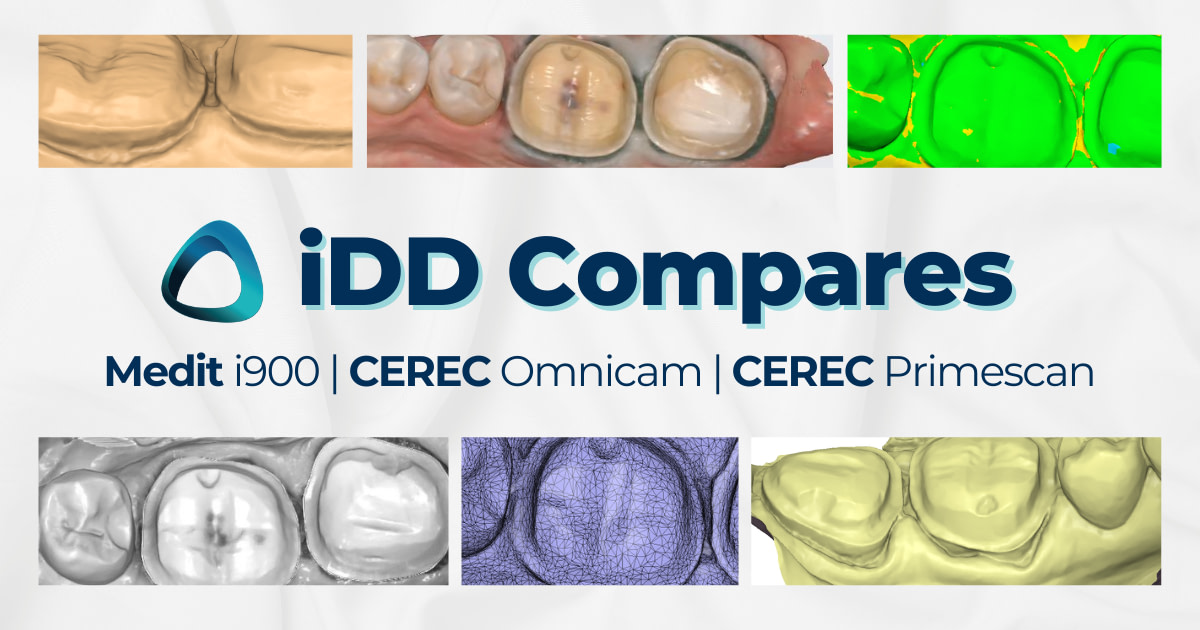Our iDD Compares posts are super popular with you guys! Thanks for your support.
We get a lot of messages and comments requesting specific intraoral scanners (IOS) to be compared.
One particular comment that kept coming up was to compare the almost 13-year-old CEREC Omnicam to some of the latest intraoral scanners. You asked! We listened!
I scanned this patient and their 46-47 crown preps, with three different scanners on the same day:
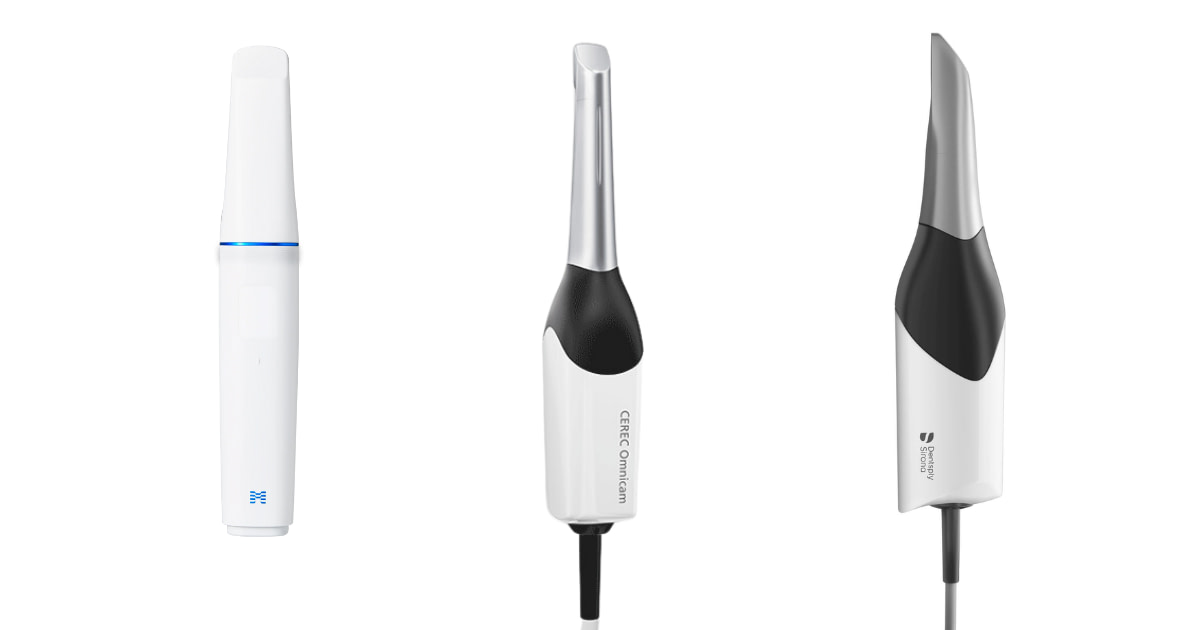
From left to right: Medit i900, CEREC Omnicam, and CEREC Primescan.
At the Institute of Digital Dentistry, we’re very lucky to have access to basically every intraoral scanner on the market.
This allows me to test them on real cases and actual patients within a clinical environment. By doing so, we can provide an honest and unbiased review when comparing the performance of each intraoral scanner.
Below are the results of the individual scans - pictures of the color scan, exported STLs, tessellated mesh, and a close-up of the prep margin.
Individual Scans in their Native Software
Every intraoral scanner has its own scanning software.
Almost all scanners can remove scan artifacts such as movable soft tissue, cheeks, and tongue through AI, with some performing better than others. Interestingly, each scanner software captures color (called texture) differently.
CEREC has always had a more 'cartoon-like' scan aesthetic rather than being very life-like. In saying that it also routinely has a very crip and sharp looking image. Medit also is not photo-realistic, but has more of a real-life image.
Both scanners scanned this easily. Medit i900 and CEREC Primescan with their large scanning head made easy work of this. Omnicam - still useable. But dusting it off for the first time in a while was a blast from the past. The very small scanning head on Omnicam does make the scanning process take longer. It also reminds me why I would never use omnicam for full arch scans.
Below, you can see what the native scan images look like for each scanner.

The processed, colored scans of the same tooth preparation were captured using three different scanners, as previewed in their native software.
As you can see both CEREC intraoral scanners, Omnicam and Primescan, display a more saturated, yellow hue than the i900.
Omnicam is a lot brighter and is almost nostalgic. Many, many years were spent using that scanner.
i900 is the classic Medit texture. Good resolution. Sharp margins.
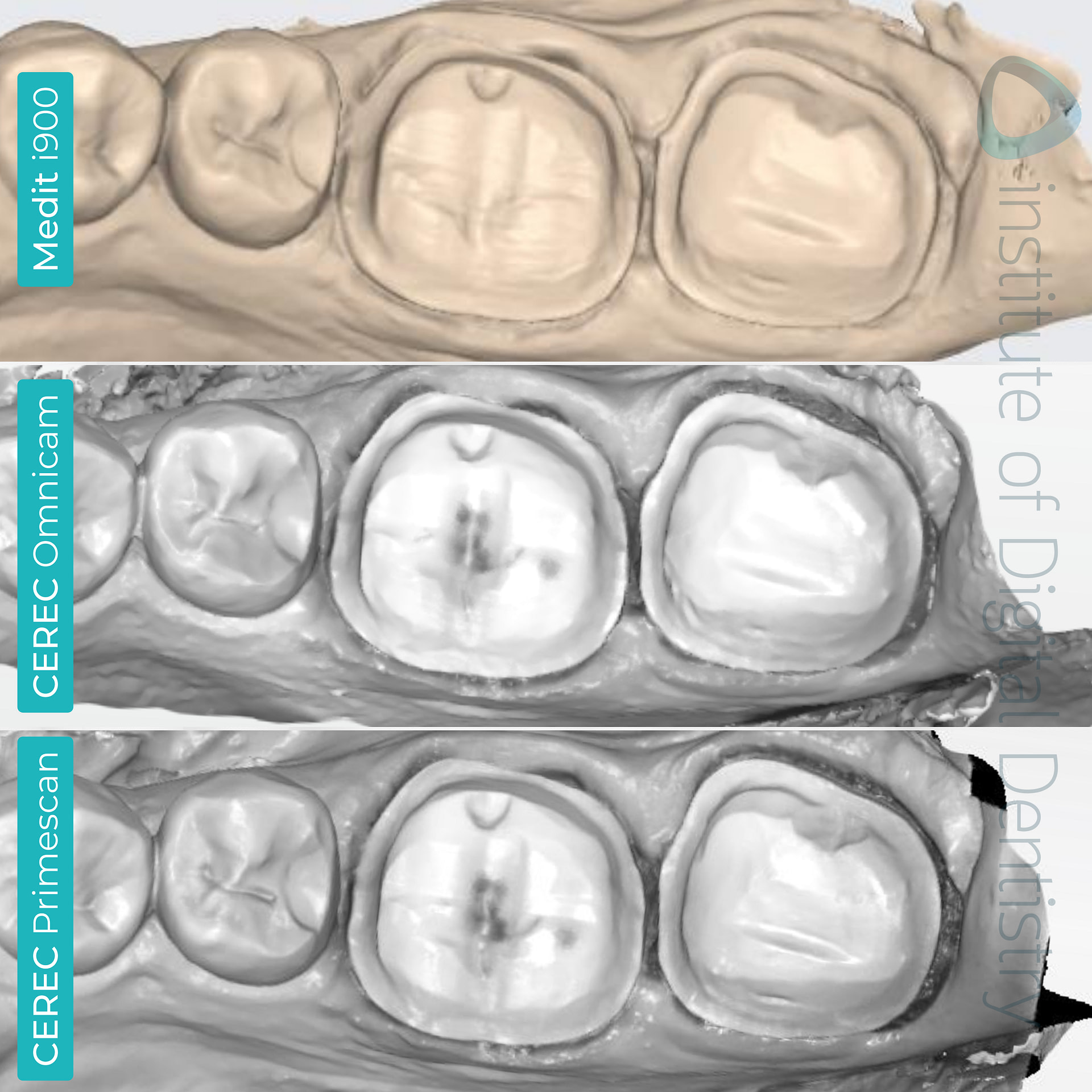
The processed monochromatic scans of the same tooth preparation were captured using three different scanners, as previewed in their native software.
Monochromatic scans can also be taken and previewed in their native software.
By looking at scans in monochrome, one can get a better view of the prep's quality.
There aren’t too many differences between the monochrome scans. However, it is apparent that the Primescan does display more detail of the prep quality in this view. It consistently does this when compared to all other scanners.
There is a stark difference between the Primescan and the younger brother - Omnicam. Interesting to see the improvement of 13 years. Omnicam, after all these years can still hold its own, especially for simple crown and bridge dentistry.
As mentioned above, the biggest difference that impacts these scanners is that the Omnicam has a tiny head and a small FOV. Also, has no heater in the scanner. This is fine for simple quadrant dentistry, but anything more, and the Omnicam shows its age.
Almost every other scanner now is moving towards larger FOV and inbuilt heaters/fans to allow for faster scanning and no issues with fogging with prolonged scanning in the mouth.
I would hate to try scanning an edentulous ridge or FMR with Omnicam these days.
Download all the scan images at 5x higher resolution?
Exported Scans in Third-Party Software
All intraoral scanners have an open architecture that allows scans to be exported and sent to labs.
These scans are usually exported in three various formats - STL, PLY or OBJ files.
STL files are exported as monochromatic scans, whereas OBJ and PLY files store color (texture).
Not all intraoral scanners can export OBJ and PLY files, whereas STL files are widely used as the industry's default setting.
This particular set of scanners is capable of exporting scans in these formats:
- Medit i900 - STL, PLY and OBJ
- CEREC Omnicam and CEREC Primescan - STL only
(unless connected to a lab via DS connect and then PLY can be exported lab side.)
Intraoral Scanner | STL | PLY | OBJ |
|---|---|---|---|
Medit i900 | 7.5 MB | 3.1 MB | 7.7 MB |
CEREC Omnicam | 24.7 MB | - | - |
CEREC Primescan | 21.2 MB | - | - |
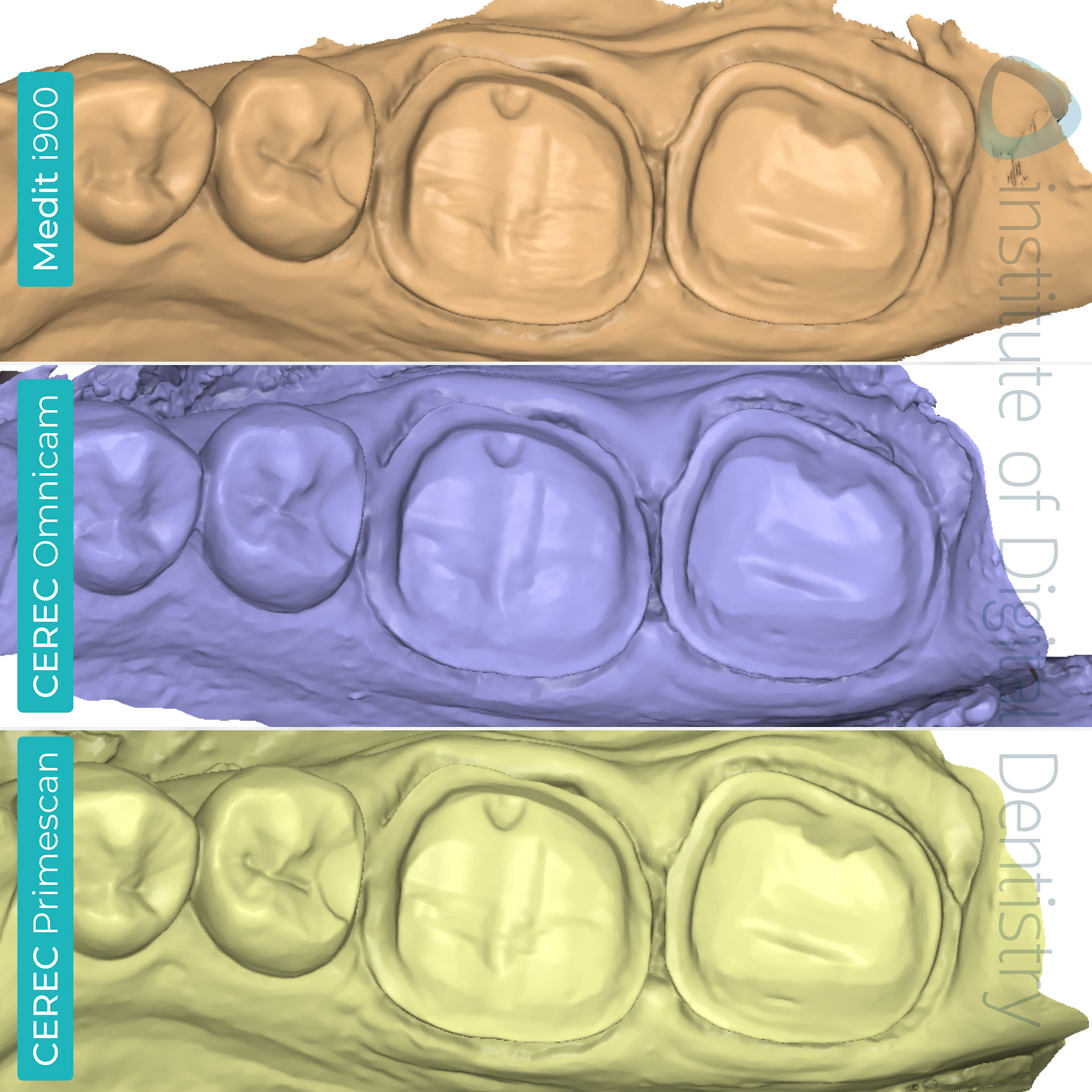
All scans were exported in an STL format and previewed in the Medit Design app.
When we look at the tessellated mesh of the scans from the various IOS devices, we can see that Medit i900 has the least dense mesh compared to CEREC’s Primescan and Omnicam, which possess the densest tessellation mesh.
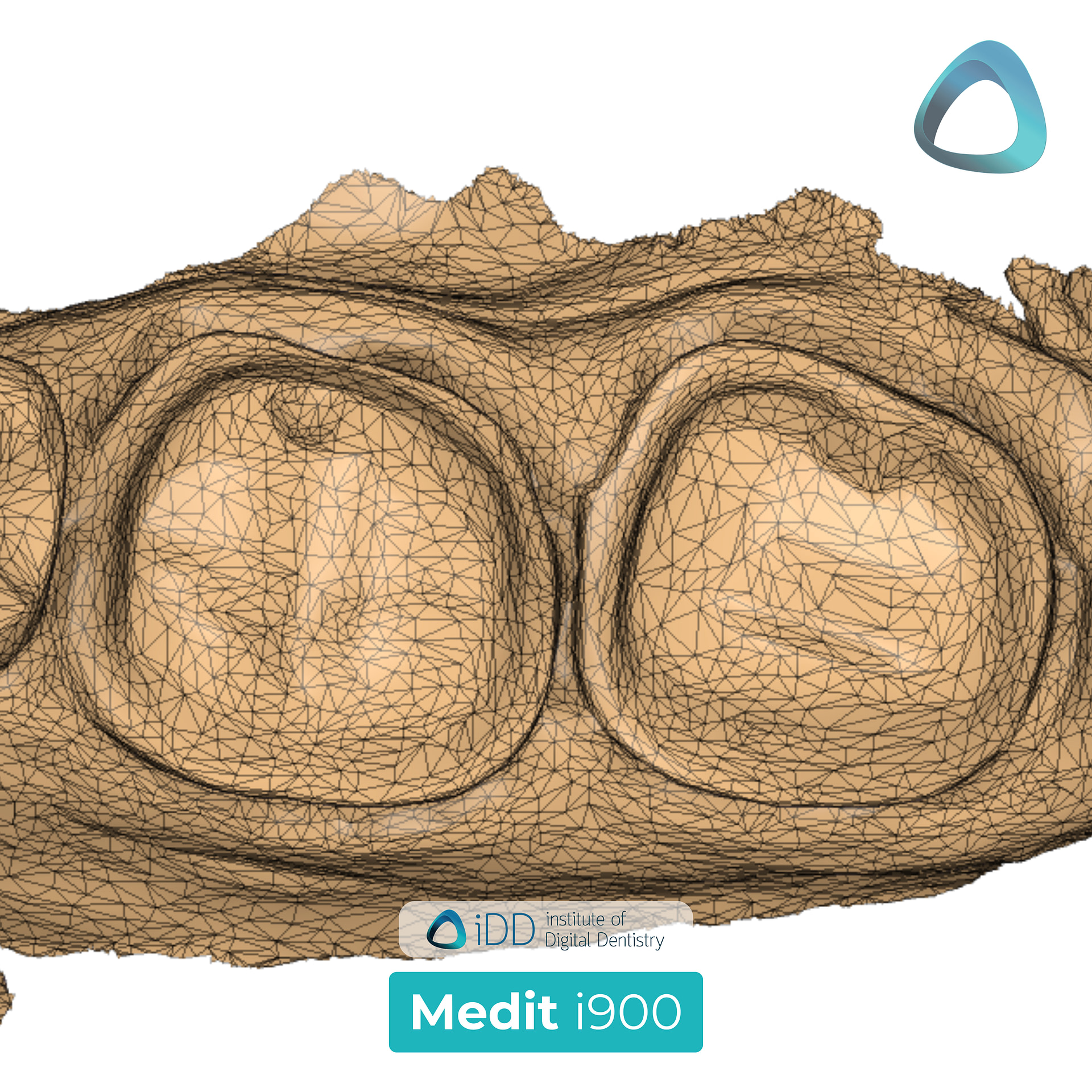
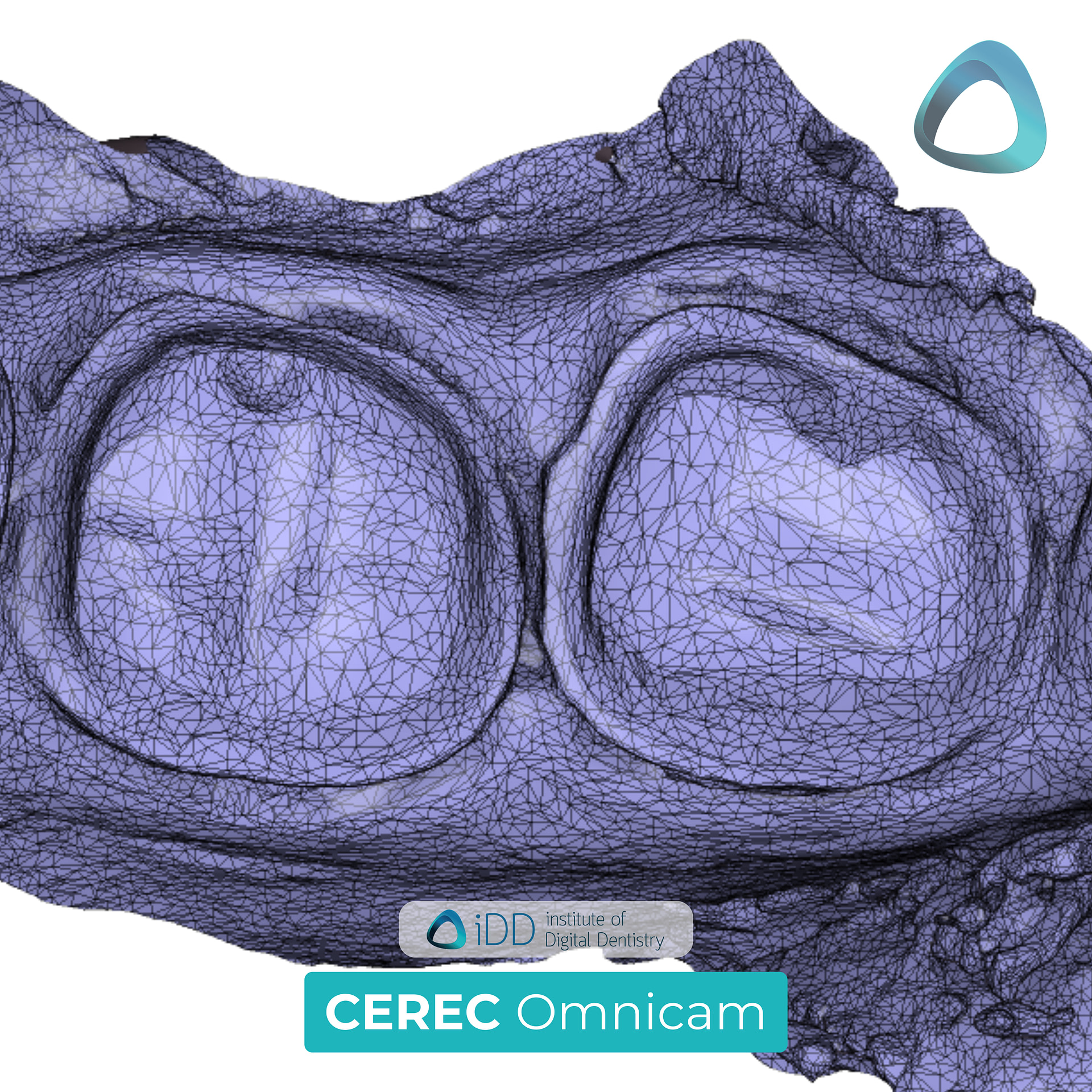
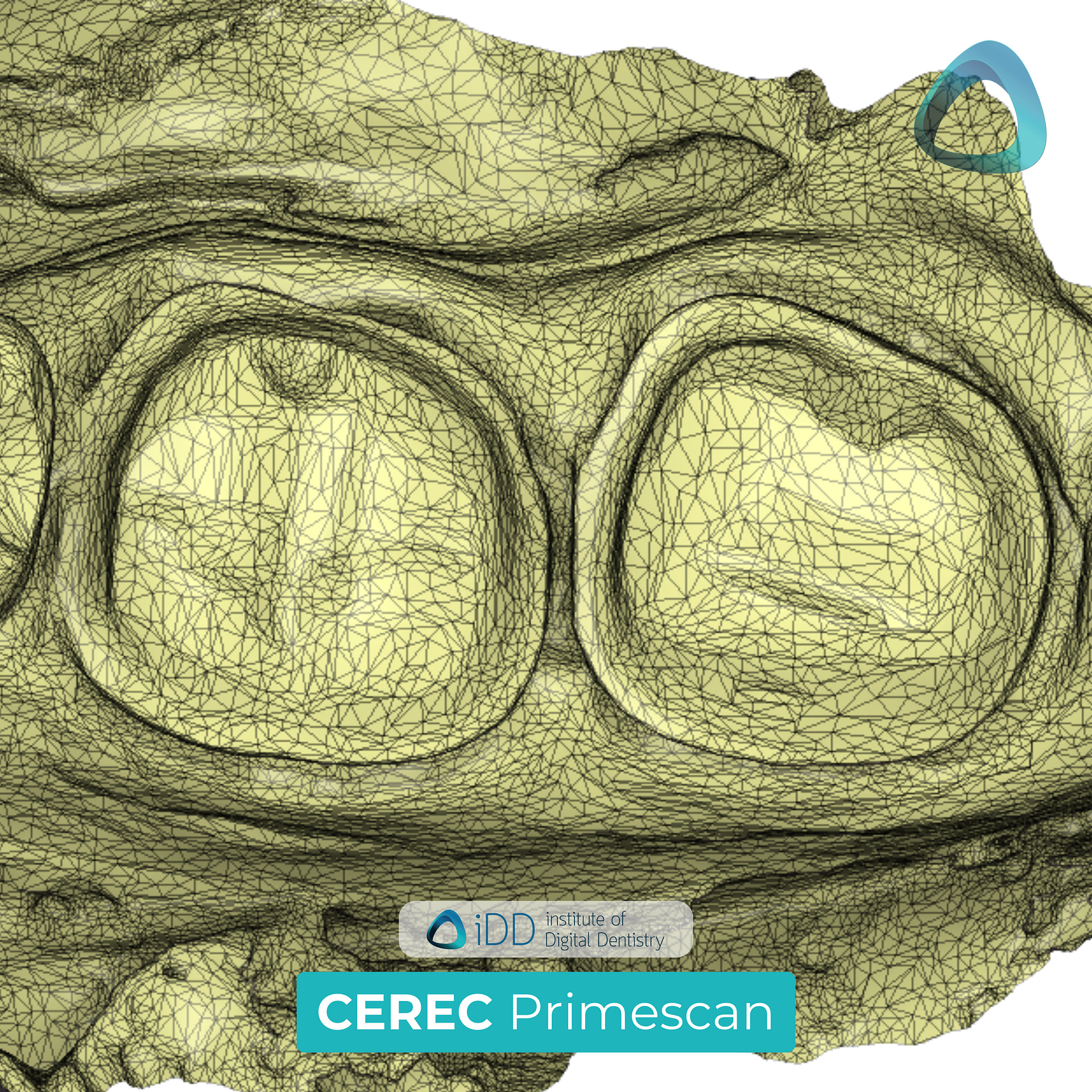
This can further be corroborated when we refer back to the STL format sizes, with the Omnicam scan being 24.7MB as the densest mesh and with the i900 scan being 7.5 MB with the least densest mesh.
Interestingly, the mesh density of CEREC Omnicam and Primescan is not hugely different. If anything, the Primescan may be slightly more dense.
Studies investigating the clinical significance of mesh density have yet to be conducted from our understanding. It is important to note that a denser mesh does not necessarily indicate a ‘better scan.’
Prep margins were viewed using the Medit Design software to compare the scans.
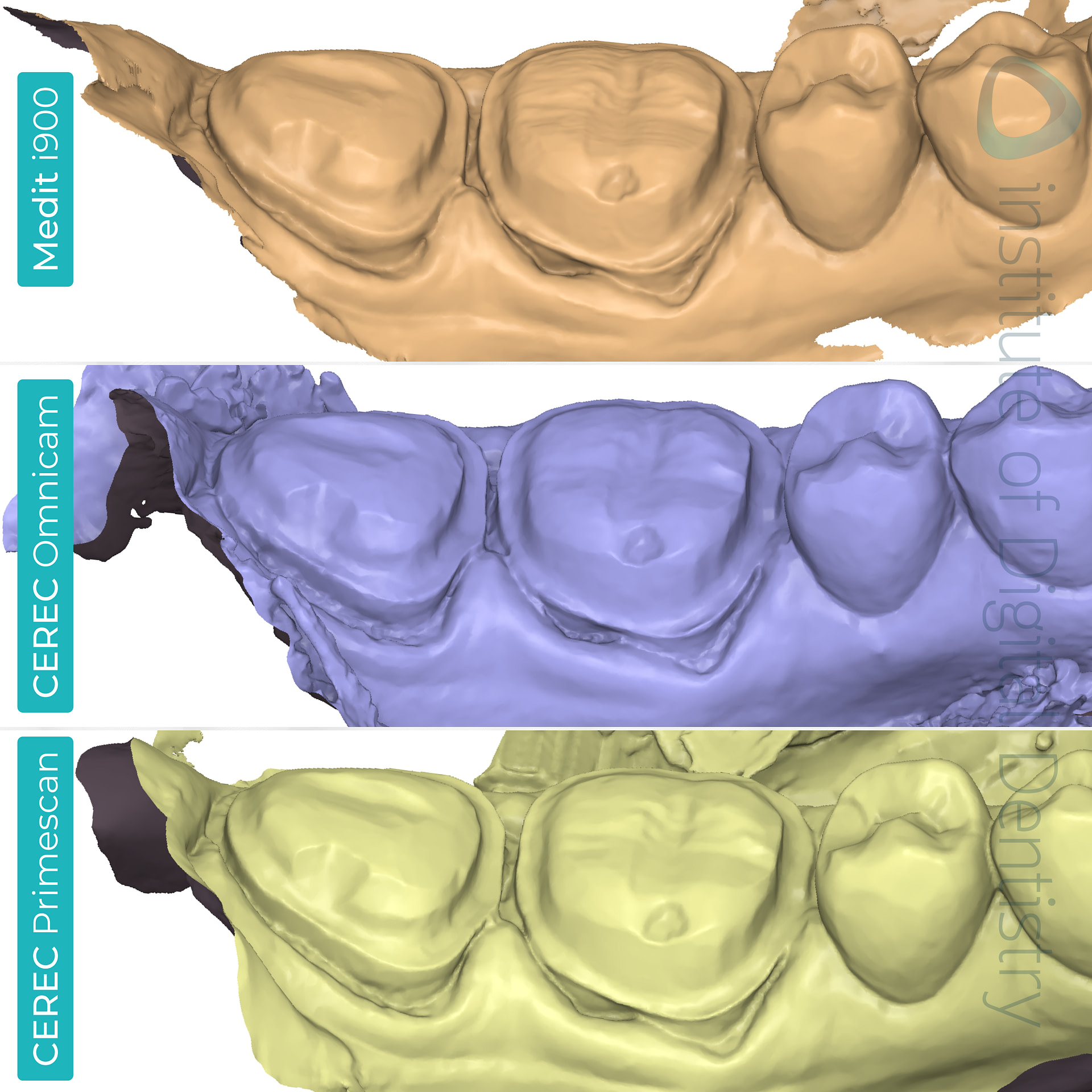
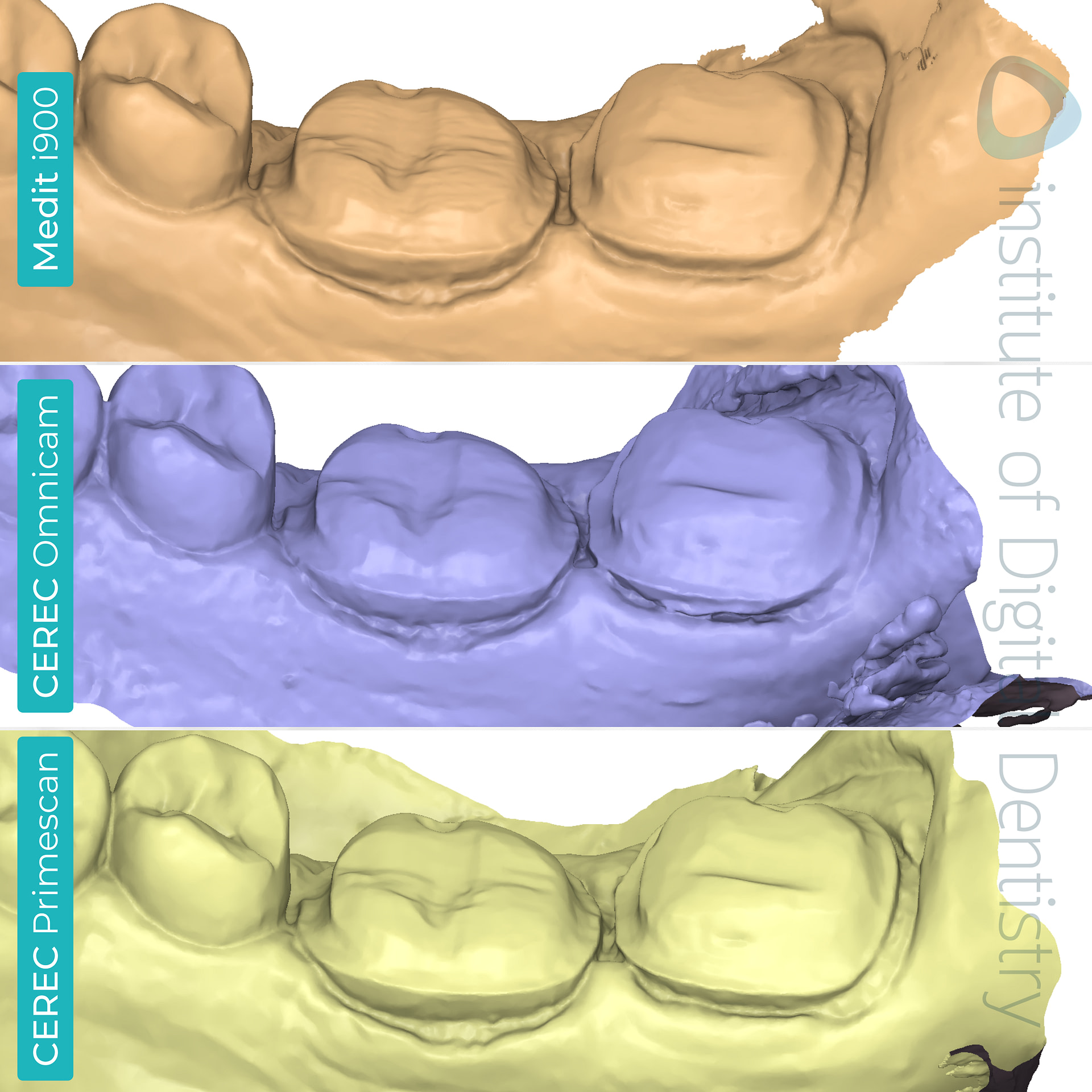
Dentsply Sirona’s CEREC Primescan is commonly seen as one of the gold standards of intraoral scanners (IOS) throughout the dental community, with it being regarded as one of the most accurate on the market.
In fact I use it literally every clinica day to fabricate same-day crowns and can vouch for its accuracy. It just works.
When viewing the preps buccally and lingually, we see that Primescan displays the margin lines more clearly than the other scanners for sure. It does a very crip margin line.
But the difference in the other non-CEREC scanners is not huge, Medit, is also quite sharp. The Omnicam, interestingly, has some areas where the margin fades out, like the mesio-lingual edge and the disto-buccal edge. Not that bad, however, a lab tech is likely to be able to work with this.
In comparing the deviation of the scans, we used Primescan as our point of reference.
We aligned all 3 scans on top of each other to see if there was any major difference.

Deviation map of the scans as compared to CEREC’s scan and sectional view. There seems to be minimal deviation around the prep area.
Based on the colored deviation key, we can see that the scan meshes are for the majority within 50 microns compared to the scan taken with CEREC Primescan.
Download all the scan images at 5x higher resolution?
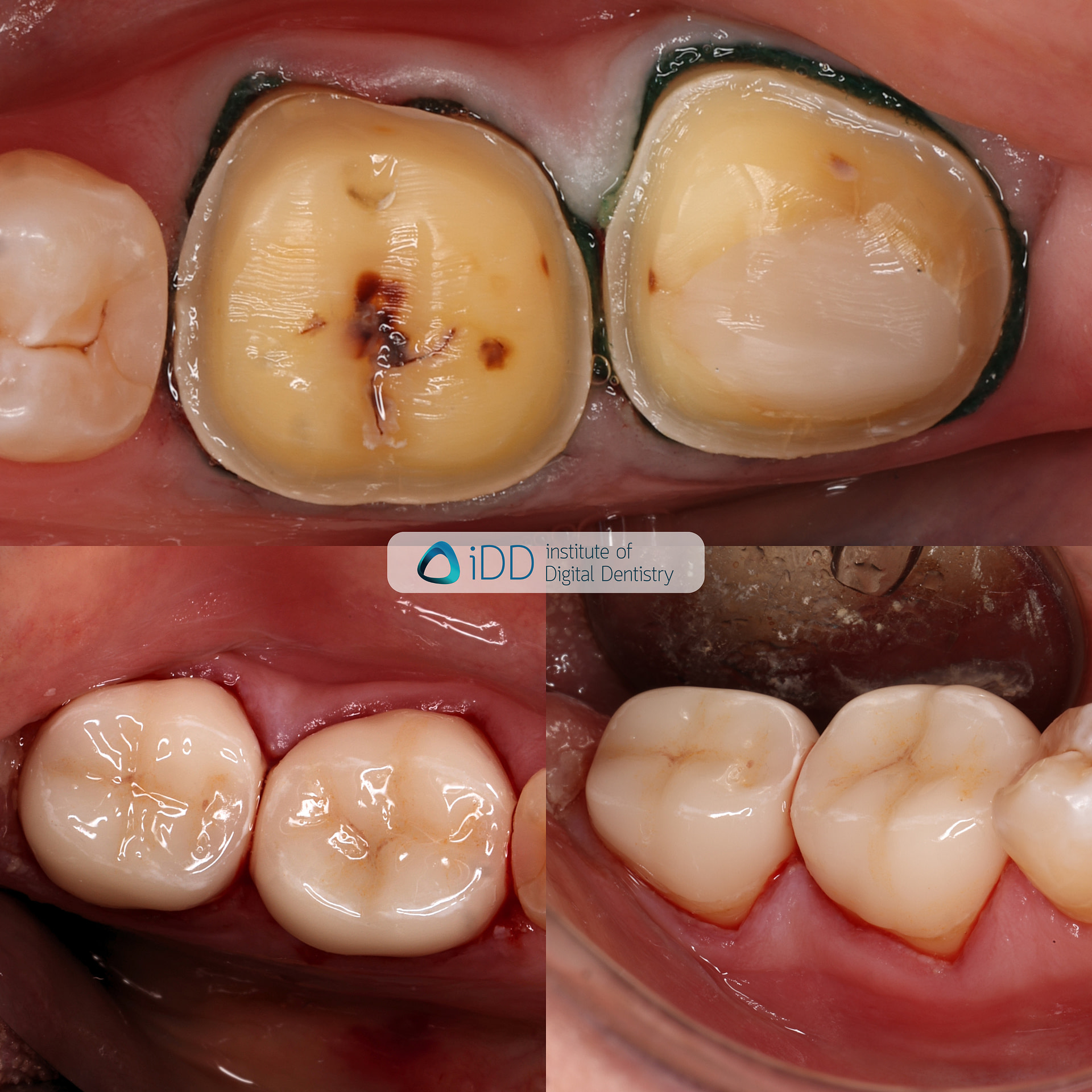
Images of the prep and finished ceramic restorations using CEREC.
And thats it!
Omnicam even to this day can be used to fabricate crowns accurately. Especially quadrant dentsitry. In saying that when compared to Primescan there is not comparison in terms of speed, ease of use and just general quality of life (inbuilt heater erc)
Let us know your thoughts and leave a comment below about which IOS you’d like us to compare next.
Download all the scan images at 5x higher resolution?

